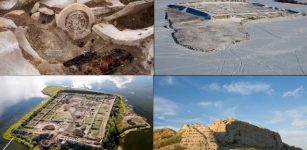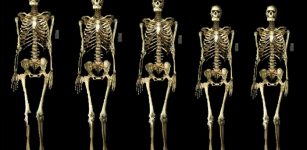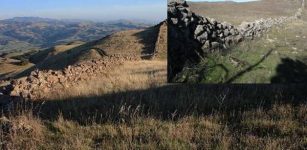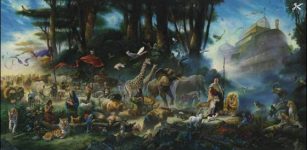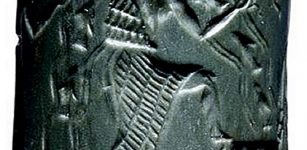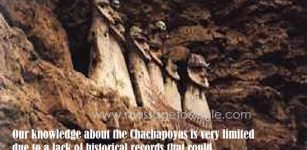Selden Map Of China: World’s Oldest Surviving Merchant Map Examined In Detail
MessageToEagle.com – There is not much information about the Selden Map of China, one of the first Chinese maps to reach Europe.
It arrived at the Bodleian Library at the University of Oxford in 1659 after having been donated by prominent London lawyer John Selden who it is believed must have acquired it by 1653 at the latest.
How John Selden obtained the map is not known, but most likely he got it from an East India Company trader who took it from another European, Japanese, or Chinese vessel in the lawless conditions of the South China Sea, but the East India Company records make no mention of it.

The Selden Map of China, was made between 1607-1619 and is painted with watercolors and ink on Chinese paper. It depicts whole of East and Southeast Asia and the presence of shipping routes with compass bearings from the port of Quanzhou, Fujian province, and reaching as far as Japan and India. It is a unique 1.6 x 1m ancient map and the earliest example of Chinese merchant cartography.
In collaboration with the Science Section of the Victoria and Albert Museum, researchers from the Nottingham Trent University have now examined the Selden Map of China in detail.
For the first time, scientists have been able to identify everything from the materials and techniques used, to the mistakes and re-drawings made by the cartographer of the map.
The map was examined in-situ and non-invasively using a remote ‘multispectral’ imaging system.
The system enabled the scientists to view areas of the map using different wavelengths of light – revealing the composition and make-up of materials used, as well as hidden details not visible to the naked eye. A range of complementary analytical techniques were used to identify the materials.
The researchers found the binding medium used for the map was gum Arabic, a gum made from the sap of the acacia tree – typically used by European, south and west Asians – and not animal glue, which was almost always used in Chinese paintings at the time.
Examinations of the pigment used found a mixture of indigo with orpiment, a yellow mineral – rather than gamboge, a yellow dye – to make a green colour, which is also very unusual for a painting in China in this period.
And the detection of a basic copper chloride in the green areas suggests an influence from south and west Asia, where it was often used in manuscripts. This green pigment was not typically used in paper-based paintings from China.
The binders and pigments used are more consistent with those found in manuscripts from a Persian or Indo-Persian tradition –and the Islamic world – than the European or Chinese, the researchers state.
See also:
Strangest Maps Ever Created – You Have Never Seen Our World Like This!
Controversial 120 Million-Year-Old “Map Of The Creator”
The examination has led scientists to believe that hat the cartographer did not plan the full map from the beginning, which was why they had to redraw some of the routes many times – and why they ran out of space at the southern and western points of the map, forcing the trade routes to be off the compass directions. Two trade routes were drawn without their corresponding compass directions, suggesting the map was unfinished.
Based on the evidence, the researchers have proposed an alternative origin for the map: Aceh, at the northwest end of Sumatra where it opens out to the Indian Ocean. It is the most westerly port in south east Asia marked on the map and has the longest history of the presence of Islam in south east Asia, as well as a long history of Chinese contact.
It is also one of only six ports on the map marked with a red circle – possibly indicating the main trading network of the map’s owner – and is the only port marked on the map to have a magnetic declination in the early 17th Century closest to that indicated by the tilt of the map’s compass rose.

Any English ship going back to Europe from south east Asia would also have to pass by Aceh either from the east or west coast of Sumatra, and thus giving them the chance to obtain the map.
“This study illustrates the importance of not judging a book by its cover,” said Professor Haida Liang, Head of the Imaging & Sensing for Archaeology, Art History & Conservation research group at Nottingham Trent University.
She added: “A seemingly Chinese map has turned out to be the material evidence of a fusion of cultures. It is stylistically a Chinese painting that follows some Chinese and non-Chinese cartographic elements, but the painting materials and their usage are more akin to those of Persian or Indo-Persian manuscripts.
“Because of its geographic location, Aceh was frequented by Indian, Arab, Chinese and European traders. We believe the map could have been made there by a Fujianese, possibly a Muslim in close contact with the Islamic world.
“This was globalisation in the early 17th Century. By focusing on the material evidence found using scientific analysis and art history, we have arrived at a new conclusion on where the map was made, following previous studies based on historical research. This work shows the immense importance of interdisciplinary research and the new insights it can bring.”
MessageToEagle.com
Expand for references
